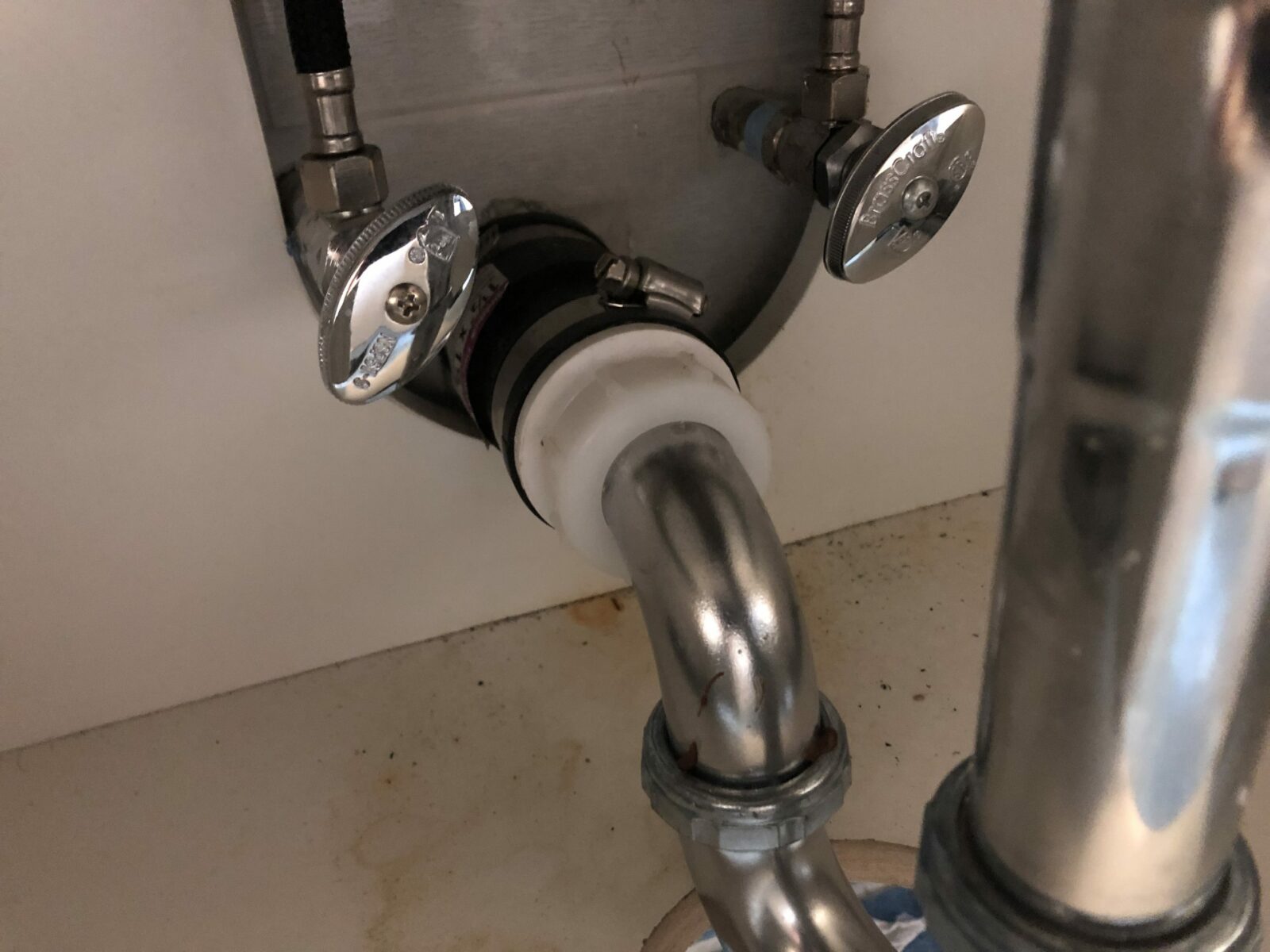Many folks ask about how to shut off water to a house or a building that they own because they are not familiar with their homes water shut off valve. The need to turn off the main water to a house can be due to a plumbing emergency because the house is vacant, or even for routine plumbing maintenance. The water supply for a building can be shut off from outside the building through 4 common methods.
4 Ways How To Shut Off Water To A House Outside The Building

- A Water Shut-Off Valve Box aka Sidewalk Curb Stop: There is often a water shut-off valve in the sidewalk area, which is commonly known as a sidewalk curb valve. It is typically located outside the building, under the sidewalk, and approximately 2′ from the curb line. There will be an operating box, which provides access to the main valve sidewalk valve, which controls the water supply to the entire property. It’s typically accessed by lifting the lid of the box and then using a special curb valve key or wrench to turn the valve.
- Street Service Line Valve aka Tap Connection: In all cases involving any size or type of building, there will be a street valve for the line, which is connected directly to the public water main. In NYC and other areas, while it was originally installed by the municipal water supply company, it becomes the responsibility of the building owner if the tap connection should fail at a future date. This valve (typically referred to as a tap connection) can be used to shut off water to individual buildings.
- Water Meter Shut-Off Valve: All buildings are required by code to have a shut-off valve on each side of the water meter, and in some cases, the water meter is located outside the building. This valve, if present, allows for shutting off the water supply to the building without having to access the main sidewalk valve box, or open the roadway. As a general rule always use the valve on the house side of the water meter, not the valve on the street side of the water meter.

- Municipal aka DEP Assistance: For certain emergencies or situations where there’s a need to shut off water to a specific area, the local water department or municipality might assist in shutting off the water supply from outside the building. This would typically be for unique emergencies, which pose a particular danger.
In case of emergency or necessity, knowing the location and how to access these external water shut-off points is crucial for building owners or designated personnel responsible for property management. However, it’s important to use caution and, if needed, contact relevant authorities or professionals to assist with shutting off the water supply from outside the building.
What’s The Difference Between Turning the Water Off and Permanently Plugging A Water Tap?
Most folks do not realize the dramatic difference between turning a water tap connection and plugging a tap connection as ways to know how to shut off water to a house. While the overall cost is similar, the difference is that once the tap connection is plugged it can never be used again – the water cannot be restored to the building. The second primary difference is that once a tap is plugged it will stop future water bills. Simply turning off a tap connection will not prevent future water bills.

5 Ways How To Shut Off Water To A House Inside The Building
There are 5 common methods of how to shut off water to a house or a building from inside the building. Owners typically can easily and safely shut off the water supplying their building using one or more of the following 5 common methods. It is also a good idea to learn how to properly operate each type of water valve. Even a water valve as seemingly as a ball valve needs to be handled with care.
- Main Water Valve: All buildings are required to have at least one main water shut-off valve. It’s usually located where the water line enters the building. This valve controls the entire water supply to the building. If it is a gate-type water valve turning it clockwise shuts off the water flow. If there are multiple valves, it’s best to use the valve closest to the inside plumbing of the house, not the street side of the house.
- Individual Fixture Shut-Off Valves: Most buildings have shut-off valves for individual fixtures like sinks, toilets, or showers. These valves are often located beneath or behind the fixture and allow for localized shut-off without affecting the entire building. When a plumbing fixture requires an individual repair, there should be no need to shut off the water for the entire building.

- Secondary Water Valves: In larger buildings or properties, there might be secondary valves or junction points that can shut off the water supply to specific sections or floors. It is best to use secondary valves such as these instead of the main water shutoff valve for an entire building. Knowing the correct valve to use is a vital part of knowing how to shut off water to a house or any type of building.
- Water Meter Shut-Off Valves: If your building has a water meter (as almost all buildings do), there should be a shut-off valve on each side of the meter itself. While not all meters have this feature, if present always use the valve on the house side of the water meter.
- Professional Plumbing Assistance: In some cases, especially if the shut-off valves aren’t easily accessible, are difficult to operate, or if there’s a complex plumbing system, a professional plumber might need to assist in locating and shutting off the water supply.
Key Tip: Learn Where Water Valves Are Located Before A Plumbing Situation Arises
In order to know how to shut off water to a house or a building, building owners must familiarize themselves with the location of these valves. Of course, it’s best to do this before a situation or an emergency involving your plumbing arises. Furthermore, building owners should regularly check that these valves are functioning properly. It is typically advisable to exercise water valves once a year so that they do not freeze in place. Additionally, they should inform building managers, tenants, and occupants about the location of these valves for emergencies.






